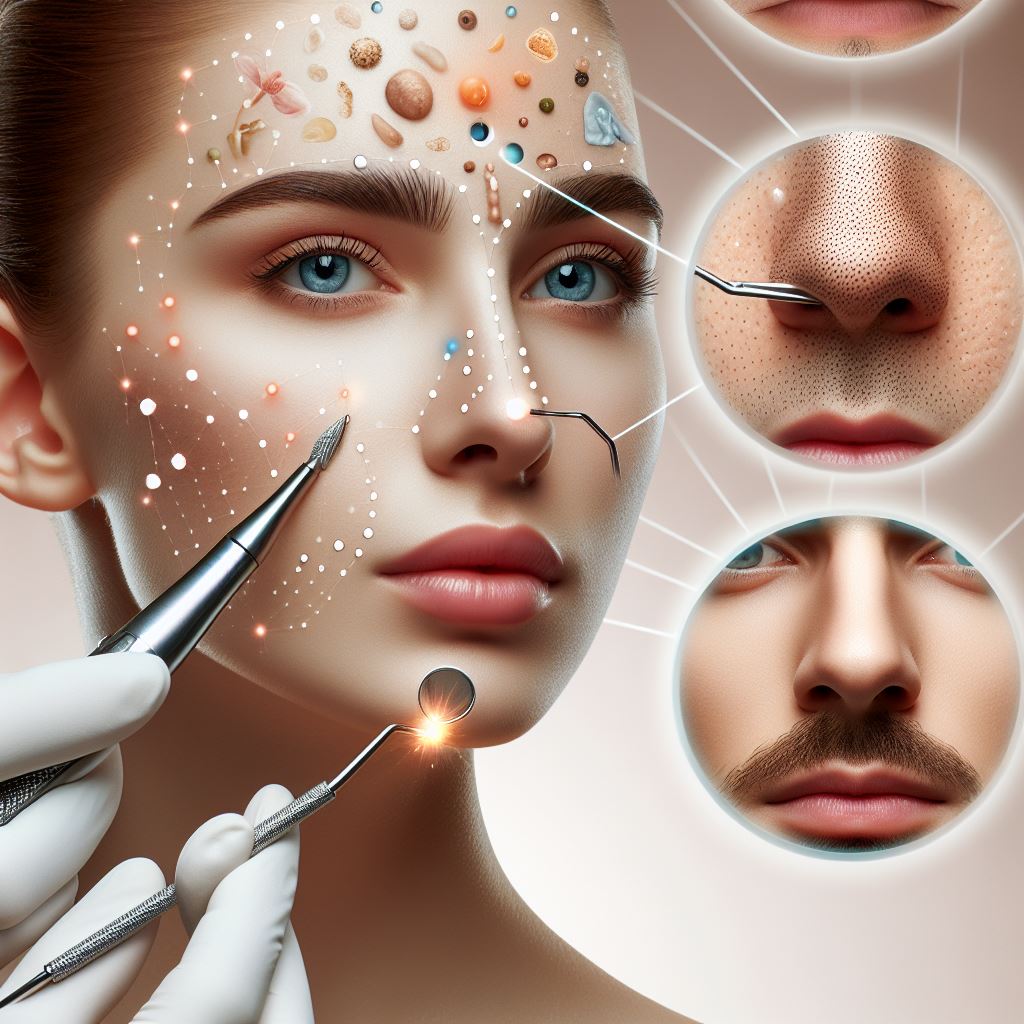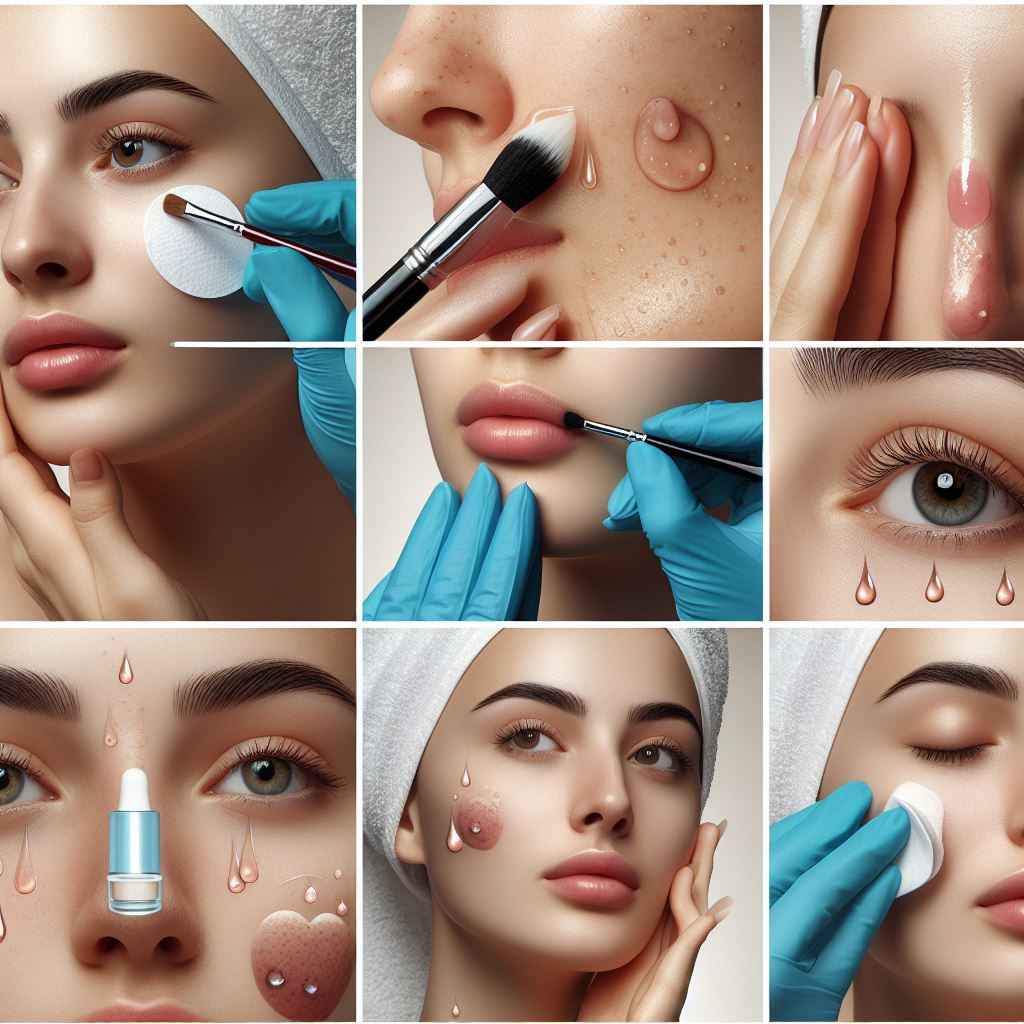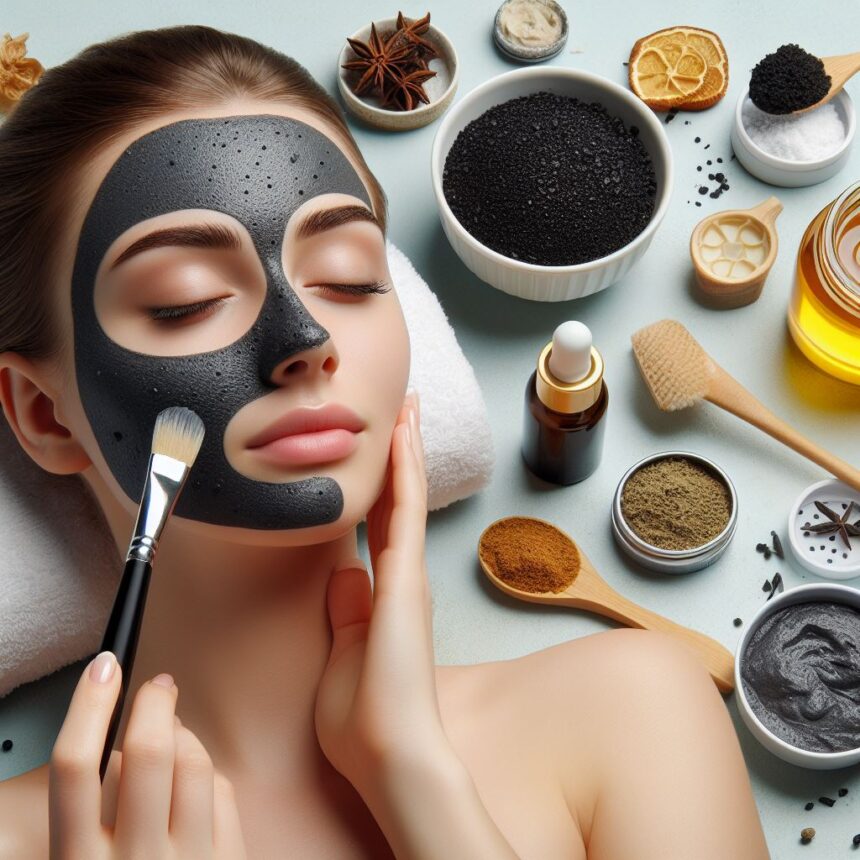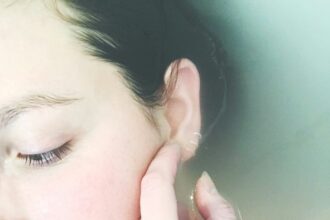Are you tired of dealing with persistent blackheads on your face? Blackheads, those small dark lesions that pop up mainly on the nose and chin, result from clogged hair follicles. They contain an oxidized mix of oil and dead skin cells and can be quite stubborn to remove. Luckily, there are several effective methods for removing blackheads, including creams, DIY home remedies, masks, and specialized tools. In this blog, we’ll dive into various techniques to help you achieve clearer, healthier-looking skin. Whether you prefer over-the-counter solutions or homemade concoctions, there’s something for everyone. So, let’s get started on your journey to a smoother, more radiant complexion!
Methods for Black Heads Removal

Creams
One effective way to combat blackheads is to use specially formulated creams. These creams often contain ingredients like salicylic acid or benzoyl peroxide, which help to dissolve the plug of dead skin and oil that makes up a blackhead. Regular application as directed can reduce the appearance of blackheads by keeping pores clear of blockages.
DIY Home Remedies for Black Heads Removal
For those who prefer natural solutions, there are several DIY home remedies that can be effective against blackheads:
– Baking soda and water: Create a paste with equal parts baking soda and water, apply to the blackheads, and rinse after a few minutes.
– Apple cider vinegar: This works as a natural astringent to help remove excess oil and clear pores. Dilute with water and apply with a cotton ball.
– Honey and milk: The antibacterial properties of honey can help clear pores, while milk helps to soothe the skin. Mix a tablespoon of honey with a teaspoon of milk, apply to the area, and let sit before rinsing.
Masks
Clay masks are particularly effective for removing impurities and oil from the skin. The clay helps to pull out the substances clogging the pores. Charcoal masks also work well by drawing out toxins and clearing blackheads. Regular use as per product instructions can keep the skin clear.
Tools
Blackhead removal tools, such as comedone extractors, can be used to safely extract blackheads. It’s crucial, however, to use these tools properly to avoid skin damage. Sanitize the tool before and after each use and gently apply pressure around the pore to ease out the blockage without bruising the skin.
How to Get Rid of Black Heads on the Nose

Techniques
Keeping the nose area clean is the first step in removing blackheads. Use gentle exfoliating scrubs or a soft brush to help remove dead skin cells and unblock pores. Facial steaming once a week can also open pores and make it easier to remove the debris that causes blackheads.
Products
For targeted nose treatment, consider pore strips specifically designed for the nose. These strips adhere to the skin and, once pulled away, remove the blackheads from the area. Nose-specific masks that contain salicylic acid or charcoal can also be particularly effective, as they are formulated to penetrate deeply into the pores of the nose area. Regular use can significantly reduce the occurrence of blackheads.
Safety Concerns: Removing Blackheads with a Shaving Razor
Using a shaving razor to remove blackheads is highly discouraged. This method can cause more harm than good to your skin’s delicate texture.
Risks
Attempting to remove blackheads with a razor can lead to several skin issues:
– Increased risk of infection from bacteria on the blade or skin surface.
– Severe skin irritation and potential development of rash due to the harshness of the blade against the skin.
– Risk of scarring from pressing the blade too hard or slipping while trying to remove blackheads.
– Greater chances of causing more pronounced pores or additional acne outbreaks due to damage to surrounding skin.
Alternatives
There are safer and more effective methods for blackhead removal:
– Use of topical treatments such as salicylic acid or benzoyl peroxide which help to break down blackheads chemically.
– Manual tools like comedone extractors specifically designed for blackhead removal, which minimize skin damage.
– Dermatological treatments such as microdermabrasion or chemical peels performed by professionals.
Closing Up Pores After Removing Blackheads
Once blackheads are removed, it’s crucial to take steps to minimize the appearance of pores and prevent future blackheads.
Preventive Measures
Implement these preventive measures to keep pores clean:
– Regular cleansing with a gentle face wash to remove dirt and excess oils.
– Application of a toner that helps to restore the skin’s pH balance and tighten pores.
– Avoiding heavy makeup or skin care products that can clog pores.
Recommended Post-Blackhead Care
Proper care after blackhead removal can prevent recurrence and maintain skin health:
– Use non-comedogenic moisturizers to hydrate the skin without clogging pores.
– Apply a clay mask once a week to draw out impurities and tighten pores.
– Consider using retinoids which help in cell turnover and prevent dead skin cells from clogging pores.
Following these recommended steps ensures that your skin remains clear, healthy, and free from blackheads.
Products for Removing Blackheads from Cheeks and Nose
Popular Choices
Several over-the-counter products can effectively remove blackheads from the cheeks and nose. Salicylic acid, a popular beta hydroxy acid, is particularly effective due to its ability to penetrate deep into the pores and dissolve the debris that clogs them. Creams and serums containing benzoyl peroxide are also highly favored because they reduce oil production and have antibacterial properties that help prevent future breakouts. For a more tactile approach, pore strips—to be used occasionally—can physically remove blackheads from the surface, though they aren’t a long-term solution.
Effectiveness
The effectiveness of these products largely depends on consistent use and the specific skin type. Products containing salicylic acid are particularly beneficial for ongoing maintenance because they not only clear existing blackheads but also prevent new ones from forming. Benzoyl peroxide, while effective, can be drying if used excessively, so moderation is key. It’s highly recommended to introduce these products gradually into your skincare routine and observe how your skin reacts before increasing their use.
Do Blackhead Removal Cause Pores or Holes on the Face?
Understanding Pore Size
Pores are natural openings in the skin that can become noticeable when clogged with oil and dead skin cells. The process of removing blackheads, whether through chemical or manual means, does not permanently enlarge these pores. However, aggressive or improper removal techniques can temporarily widen them or cause irritation.
Debunking Myths
Many believe that blackhead removal causes permanent holes or enlarged pores on the face, but this is a myth. Proper techniques and gentle care ensure that your skin remains healthy and the pores resume their normal size. It’s important to follow up with a good skincare routine, including cleansing and moisturizing, to maintain the health and appearance of the skin. Also, using a daily sunscreen can prevent the pores from appearing larger due to skin damage.
How to Deal with Deep Tight Blackheads
Troubleshooting Strategies
Tackling deep, tight blackheads might seem daunting, but with the right strategies, you can effectively reduce and eventually eliminate them. Begin by maintaining a consistent skincare routine. Cleansing twice daily with a product containing salicylic acid can help dissolve the dirt and oil clogging your pores. Exfoliating with a gentle scrub or a chemical exfoliant (like glycolic acid) twice a week can also assist in removing dead skin cells and loosening the blackheads. Always remember to be gentle to avoid causing more harm than good. Additionally, consider using a retinoid cream, which aids in cell turnover and prevents the plugging of pores.
Seeking Professional Help
When home treatments don’t seem to make a dent in your deep blackheads, it might be time to seek professional help. Dermatologists can offer a range of effective treatments such as manual removal, chemical peels, or laser therapy. Manual removal involves using a sterile tool to extract the blackheads, whereas chemical peels can help in deeply exfoliating the skin to unclog pores. Laser therapy, on the other hand, reduces the oil glands’ size, lessening oil production and clogging of the pores. Consulting with a skincare professional can provide you with a tailored solution that suits your skin type and condition.
DIY Home Remedies for Black Heads Removal
Simple Home Ingredients
You don’t always have to look far to find effective remedies—sometimes, they’re in your kitchen cabinet! Ingredients like honey, lemon juice, and baking soda can be great for removing blackheads. Honey has antibacterial properties, while lemon juice acts as a natural astringent to clear the pores, and baking soda helps exfoliate the skin. Another powerful ingredient is apple cider vinegar, which helps in balancing the skin’s pH levels and reducing the appearance of pores.
Step-by-step Instructions
To create a simple, effective blackhead-removing mask at home, follow these steps: First, mix one tablespoon of honey with a teaspoon of lemon juice and one teaspoon of baking soda to form a paste. Before applying the mask, perform a patch test on your skin to ensure there are no adverse reactions. Apply the mixture to your face, focusing on areas affected by blackheads, and leave it on for about 15 minutes. Rinse off with warm water, then splash your face with cold water to close the pores. For best results, apply this mask once or twice a week.
Making Your Own Blackhead Extractor
Tools and Materials
Creating your own blackhead extractor is an inexpensive and straightforward method to handle pesky blackheads. To start, you need a few basic materials:
– A small, thin loop of metal, such as a paperclip.
– A pair of pliers to bend the metal.
– Cotton balls or pads.
– Rubbing alcohol for sterilization.
Ensure that all materials are clean and disinfected to prevent any possible skin infections.
Process
Firstly, take the paperclip and unbend it using pliers to create a straight line. Then, form a small loop on one end of the straightened paperclip; this loop should be small enough to encircle the blackhead but not so tight as to damage the skin. Use the pliers to ensure the loop is securely fashioned. Once your tool is ready, sterilize it by wiping thoroughly with rubbing alcohol. Before and after each use, ensure to sterilize the extractor to maintain hygiene. To use, position the loop around the blackhead and gently press down and then upwards to coax the plug out from the pore. Remember, using excessive force can damage the skin and lead to scars or infection.
Quick Home Remedies for Fast Blackhead Removal
Immediate Solutions
When you need a quick fix for blackheads, consider these home remedies:
– Honey and milk pore strips: Mix one tablespoon of organic honey with one teaspoon of milk. Heat the mixture for 5-10 seconds in the microwave, apply it over the blackhead area, place a clean cotton strip on top, let it dry for about 20 minutes, then peel away.
– Egg white mask: Apply a thin layer of egg white over your face, place tissue paper on top, and apply a second layer of egg white. Let it dry completely and then peel off. This mask can pull out blackheads and tighten pores.
Long-term Prevention
To prevent blackheads from coming back, integrate these habits into your skincare routine:
– Keep your face clean: Wash your face twice daily with a gentle cleanser, especially after sweating.
– Exfoliate regularly: Use gentle exfoliants to remove dead skin cells that can clog pores.
– Use water-based, non-comedogenic products: These products are formulated not to block pores.
– Stay hydrated and maintain a balanced diet: Hydration and nutrition help maintain the health of the skin and can prevent excess oil production.
Tape Method for Removing Blackheads
 Image courtesy: Pexels
Image courtesy: Pexels
How it Works
The tape method for removing blackheads is a simple DIY technique that involves using strips of adhesive tape to pull blackheads out from the pores. You gently press the tape against the affected skin area, leave it on for a few minutes, and then swiftly peel it off. The adhesive on the tape adheres to the top layer of blackheads and, upon removal, can pull these blackheads out of the pores.
Safety Tips and Recommendations
To ensure safety and effectiveness when using the tape method for blackhead removal, consider the following recommendations:
– Always use tape that is designed for skin contact, like pore strips, to avoid irritation.
– Test the tape on a small area of your skin before applying it to sensitive areas like the face to check for any adverse reactions.
– Do not use this method too frequently as it can strip off natural oils and irritate the skin, leading to more skin issues.
– Follow up with a gentle cleanser and moisturizer after removing the tape to soothe the skin and keep it hydrated.







Very nice post and right to the point. I am not sure if this is really
the best place to ask but do you people have any thoughts on where to get some professional writers?
Thanks 🙂 Escape roomy lista